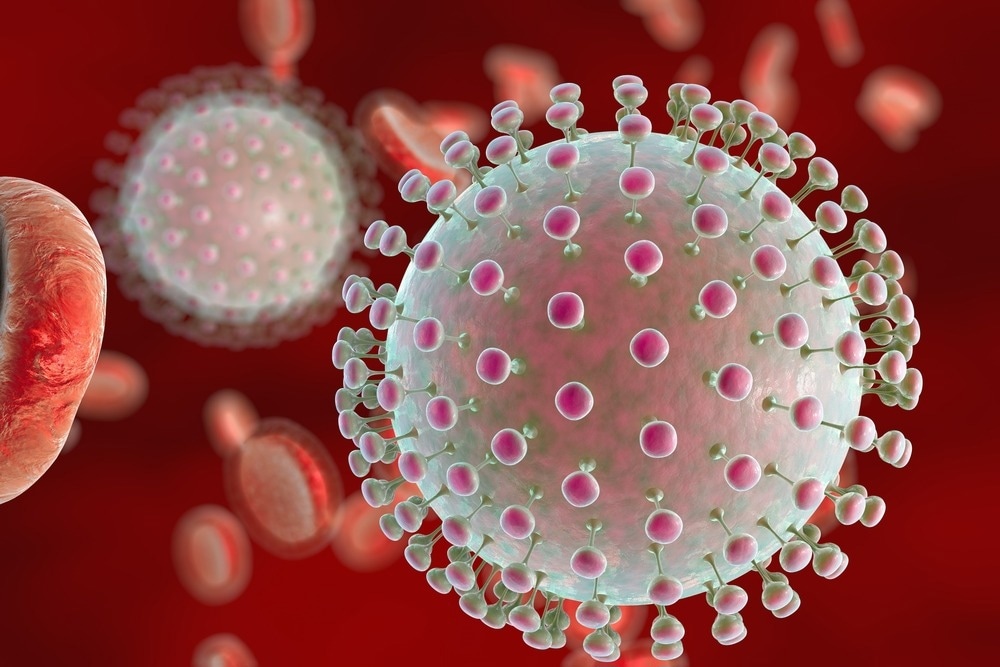 By Neha MathurReviewed by Danielle Ellis, B.Sc.Mar 27 2023
By Neha MathurReviewed by Danielle Ellis, B.Sc.Mar 27 2023A recent study published in the Cell Press Journal demonstrated that plasma immunoglobulins of isotype M (IgM) elicited during pregnancy have an exceptional Zika virus (ZIKV) neutralizing potential.
 Study: A Zika virus-specific IgM elicited in pregnancy exhibits ultrapotent neutralization. Image Credit: Kateryna Kon/Shutterstock.com
Study: A Zika virus-specific IgM elicited in pregnancy exhibits ultrapotent neutralization. Image Credit: Kateryna Kon/Shutterstock.com
Background
ZIKV infections during pregnancy heighten the risk of vertical transmission from mother to fetus. The subsequent threat of congenital neurodevelopmental deficits affects up to 14% of neonates.
Like other flaviviruses, ZIKV infection elicits a humoral immune response characterized by persistent IgM serum antibodies. Previous studies have shown that ZIKV-specific IgM monoclonal antibodies (mAbs) formed during pregnancy are critical components of protective immunity against ZIKV. Yet, studies have not characterized these ZIKV-specific IgM mAbs.
About the study
In the present study, researchers isolated a pentameric ZIKV-specific IgM (DH1017.IgM) from an infected pregnant female to characterize it and develop an understanding of the mechanisms of action of the IgM isotype against ZIKV.
They used blood plasma samples from a cohort of pregnant women with serologically confirmed ZIKV infection from the 2015–2016 ZIKV outbreak that hit Brazil. Serological investigations confirmed that most of these women also had prior exposure to Dengue virus (DENV), termed secondary ZIKV.
The researchers included two primary and eight secondary ZIKV infection cases in this study, from whom they collected samples between eight and 406 days post-symptoms (DPS). In addition, they collected multiple longitudinal samples from subject P73, who had prolonged viremia lasting up to 42 DPS. All the pregnant women in the study cohort had adequate ZIKV-neutralizing serum antibodies at delivery.
Of note, 10 subjects in this cohort also had ZIKV-binding plasma IgM, present up to 406 days post-infection in subject P73. So, the researchers measured total IgM and IgG titers, ZIKV-binding IgG levels, and ZIKV neutralization by paired samples after mock and actual IgM depletion. In this way, they evaluated the contribution of plasma IgM to ZIKV neutralization in pregnant women.
Next, the researchers investigated the B cell pool of subject P73 to find B cells that produced ZIKV-neutralizing IgM Abs. They sorted the original DH1017 B cells from an unfractionated B cell pool with class- and non-class switched memory B cells alongside naive B cells.
Furthermore, the researchers performed in vivo studies to evaluate the potency of DH1017.IgM against ZIKV infection in a mouse model. Additionally, they characterized the DH1017 epitopes using electron microscopy and single-particle reconstruction. Finally, they experimentally validated the multivalent mode of antigen recognition of DH1017.IgM.
Study findings
The study results showed serum IgM Abs's crucial role in controlling ZIKV infection at an early stage. Thus, the researchers noted a temporal relation between the early peak of serum IgM in the participating pregnant women and clearance of ZIKV infection within 10 to 14 days of disease onset.
Indeed, early appearance, i.e., before IgG responses and persistence of circulating IgMs, helped pregnant women achieve rapid ZIKV neutralization. However, more work is needed to establish a relationship between the plasma IgM quality and the resolution of prolonged viremia, as observed in subject P73.
This participant also had pre-existing DENV immunity, yet DH1017.IgM did not bind to DENV, indicating it was not involved in a recall immune response.
Furthermore, the authors did not discover additional mutations or class-switched DH1017.IgG mAbs in the DH1017.IgM B-lymphoblastoid cell lines (B-LCL), suggesting these B cells did not undergo somatic hypermutations (SHM) and class-switching during several rounds of cell expansions.
Likely, an IgM-expressing memory B cell gave rise to DH1017.IgM B-LCL. Thus, the researchers postulated that IgM+ memory B cells are likely the source of all nAbs that bind virions depending on the isotype. However, future studies should investigate if they are the preferred source of ZIKV IgM-nAbs.
Another intriguing observation was that a class of potent IgM mAbs recognize and bind to a quarternary epitope on ZIKV, different from previously identified potent ZIKV-specific mAbs. Most likely, the multimeric structure of the IgM isotype facilitates this binding at high orders of valency.
Narrow scanning micrographs (NSEM) showed that five E dimers in domain II of ZIKV are concurrently bound through an IgM-specific antigen recognition multivalent mode, demonstrating a functional advantage of DH1017.IgM compared to IgG isotype.
NSEM micrographs of a ZIKV also showed virion aggregation in the presence of DH1017. IgM is a potent viral neutralization mode. A five times more dosage of DH1017. IgG achieved a biological effect comparable to DH1017.
IgM, further validating its exclusive ultra-potency against pathogens with repetitive proximal structures, such as ZIKV. Future studies should explore whether epitopes other than the DH1017 epitope are also permissive to such multivalent antibody interactions. Nonetheless, the five-fold axis of symmetry on the virion surface remains critical for such interactions.
Conclusions
Effective therapeutic interventions, which are also safe and easy to deploy in pregnant women, are urgently needed to mitigate the risks of congenital ZIKV transmission. Also, a handful of efficacy trials for ZIKV vaccines have been underway owing to its low circulation. In this scenario, DH1017.IgM might be a suitable passive intervention for protection against ZIKV infection.
More importantly, as IgM mAbs are not transferrable across the placenta, they would not pose any risk of fetal toxicity. Also, their half-life is considerably shorter than IgG mAbs. Clinical trials for 20 IgM mAbs are in process, and their preliminary findings suggest the safety and tolerability of infused IgM mAbs.
Nonetheless, studies should continue in pregnant animal models to assess whether DH1017.IgM could protect against fetal infection and prevent fetal damage by reducing maternal viremia.